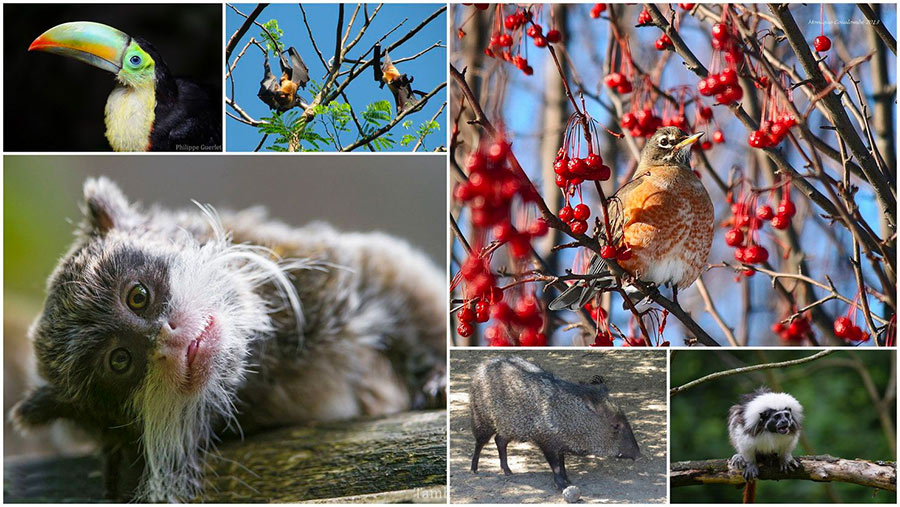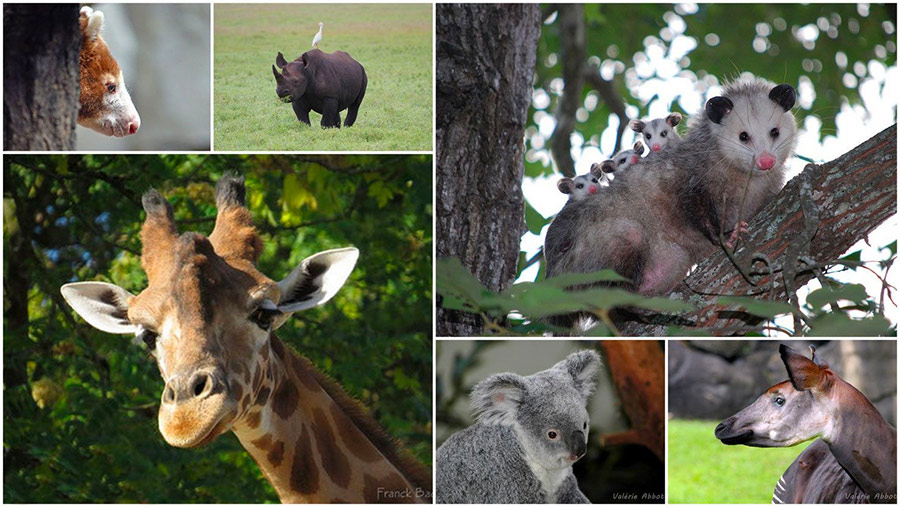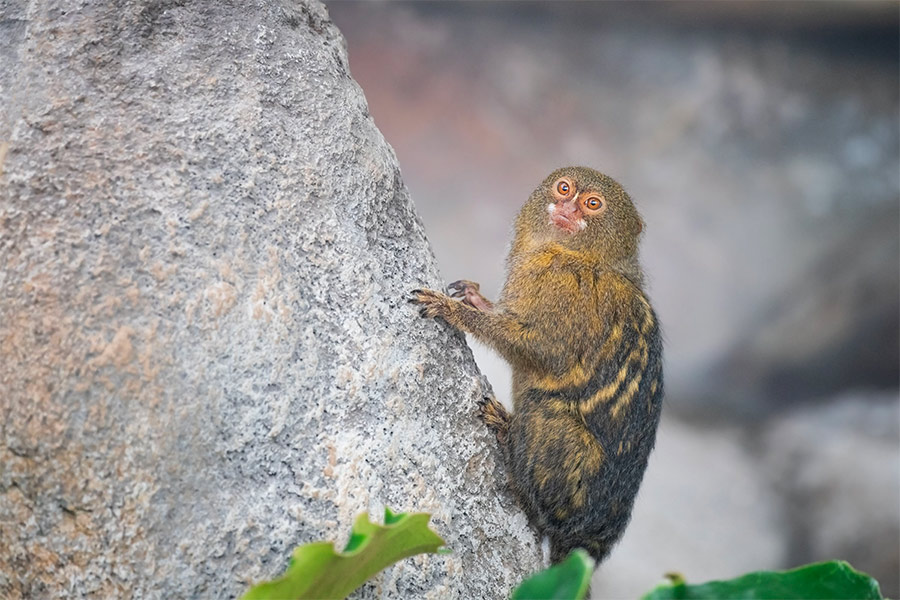- Diet is a trait that influences the anatomy, physiology, and social behavior of primates
- Most primates consume plant foods, but over the course of human evolution, our diet has been shaped by meat consumption, cooking, and the rise of agriculture
Highlights
The 19th century French writer and food-enthusiast Anthelme Brillat-Savarin wrote, “Tell me what you eat and I will tell you what you are.” This became the more familiar adage, “You are what you eat.” Had he turned his attention to his primate cousins, Brillat-Savarin’s inclination for dietary observation would have made him an excellent primatologist!
What is on their plate?
Diet and feeding behavior are critical adaptations that affect many aspects of primate lives, including anatomy, physiology, and social behavior. As humans, we have uniquely flexible diets, which, combined with the innovations of cooking and agriculture, have radically changed our bodies, our brains, and our health. Taking a closer look at the diet and feeding behavior of wild primates can help us understand how diet has shaped human evolutionary history and the role food plays in our lives today.
All living beings need to eat, and primates are no exception. Primates are an omnivorous group of mammals, but their eclectic food choices can be broadly classified into a few main dietary categories—frugivores (who eat mostly fruit), folivores (who eat leaves), gumnivores (who eat gum/sap), and faunivores (who eat insects and small vertebrates). Of course, these simple categories hide a lot of complexity and many primates rely on multiple categories of food throughout the year.

Frugivores are animals that thrive mostly on raw fruit or succulent fruit-like produce of plants, like roots, shoot, and nuts and seeds.
Image credit https://www.sciencedirect.com/science/article/abs/pii/S0047248408001565 https://www.diconimoz.com/les-r%C3%A9gimes-alimentaires-des-animaux/les-animaux-frugivores/

Folivores are herbivore that specialize in eating leaves.
Image credit https://www.diconimoz.com/les-r%C3%A9gimes-alimentaires-des-animaux/les-animaux-folivores/

A gumnivore is an omnivorous animal whose diet consists primarily of the gums and saps of trees and bugs for protein. Pygmy marmoset, the smallest monkey in the world, is a gumnivore and is indigenous to South America and the Amazon rainforest.
Image credit Shutterstock

A faunivore is any animals that eats other animals. They possess distinct traits designed for pursuing and catching prey.
Image credit Shutterstock
Show me the teeth
The foods a primate eats influence that animal’s anatomy. Teeth and jaws vary in size and shape in response to the physical properties of foods. This is most obvious in the molar teeth, which are responsible for mastication—breaking food into smaller pieces for easier digestion.

The teeth of each of these different feeders has evolved to process the type of foods it eats.
Image credit Doug M. Boyer, Journal of Human Evolution, Dec 2008 https://www.sciencedirect.com/science/article/abs/pii/S0047248408001565
Leaf-eating primates tend to have molars with long, sharp ridges for efficient slicing. Fruit-eaters have molars with low, blunt cusps for crushing pulp and seeds. The molars of primates that eat insects have extremely sharp, pointed cusps that can pierce insect carapaces. There is such a close correspondence between molar tooth shape and diet that paleontologists can often tell what type of food an extinct animal ate just by looking its teeth. Once food is swallowed, it enters the digestive tract, the length and complexity of which also varies according to diet. For example, folivores have to contend with difficult-to-digest cellulose and toxins present in leaves. Many folivorous primates have evolved pouches in the stomach or large intestine to house bacterial colonies that aid in digestion. Colobine monkeys in Africa and Asia go a step further: their multichambered stomachs make them the cows of the primate world.
Where and how far is the food?
Before you can eat food, first you have to find it. The abundance and distribution of preferred foods on the landscape determines the foraging strategy, or the lengths to which primates must go to get a bite. Consider an equatorial forest where leaves are found everywhere and grow all year round. By contrast, fruits in this forest grow on only a few trees, which may be few and far apart and only grow fruit during certain times of year. In this setting, frugivorous primates have to travel much further to find a meal than their leaf-eating neighbors. Frugivores tend to have larger home ranges than folivores because fruits are a low-density, high-quality food resource. Searching for this type of preferred food is a challenge requiring serious brain power to solve! Primates that eat low-density, high-quality foods tend to have larger brains than species that eat uniformly distributed, lower-quality foods. It turns out that you’re more than just what you eat—you’re also how you eat it!

Modern human diet can be a cross-section of many types of foods.
Image credit Shutterstock
A cooked meal and a growing diet
One look at your dinner plate will give you a good sense of what makes human diets so different from other primates. Unless you’re a vegetarian, your plate likely contains some meat. Chimpanzees, our closest living relatives, eat mostly fruit, but a small portion of their diet comes from the meat of small animals.
Since our split from a last common ancestor with chimpanzees roughly 7.0 million years ago, most of our extinct hominin cousins primarily subsisted on a diet of diverse plant foods. Regular meat consumption was not a part of the hominin diet until around 2.0 million years ago. The timing of this increased consumption of meat coincides with physical changes in hominin evolution. With access to a high-quality diet of animal proteins, our genus Homo evolved larger bodies and brains while reducing the size of the teeth and guts.
While chimpanzees eat raw meat, the meat on your plate is hopefully cooked! The archaeological record shows that hominins have had controlled fire since at least 1.0 million years ago, if not earlier. In addition to killing harmful bacteria, cooking increases the digestibility of both plants and animal tissues, allowing your body to extract more energy from these foods. Some researchers suggest that cooking meat was a critical turning point in the evolution of increased brain size during hominin evolution.
Maybe your plate also contains some vegetables and grains. Chances are that these were cultivated specifically for human consumption. The advent of agriculture in the last 10,000 years radically changed humans’ access to foods by increasing food availability while decreasing the diversity of foods consumed.
Compared to hunter-gatherers, early farmers had much more limited diets, increased exposure to disease, and higher rates of dental disease. These problems have become exacerbated by modern processed foods, which quickly supply more calories than most individuals can expend in a day. Human diet is uniquely varied among primates and, while there is no one “ideal human diet,” the foods we eat and how we eat them have shaped the human evolutionary past and present. Faced with the challenge of addressing food insecurity while mitigating the negative impacts of industrialized foods on both the environment and our bodies, the human diet will also be critical for determining our future.
Written by Ellis M. Locke PhD